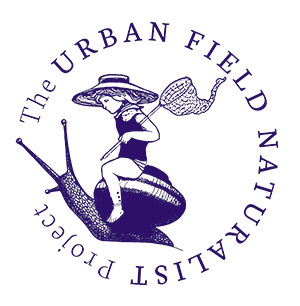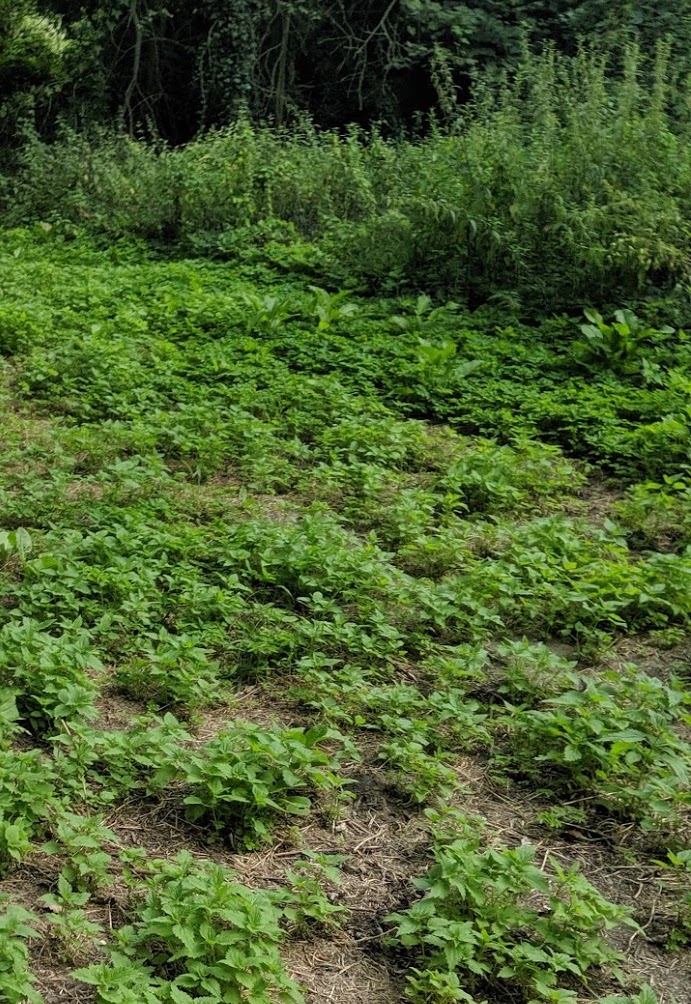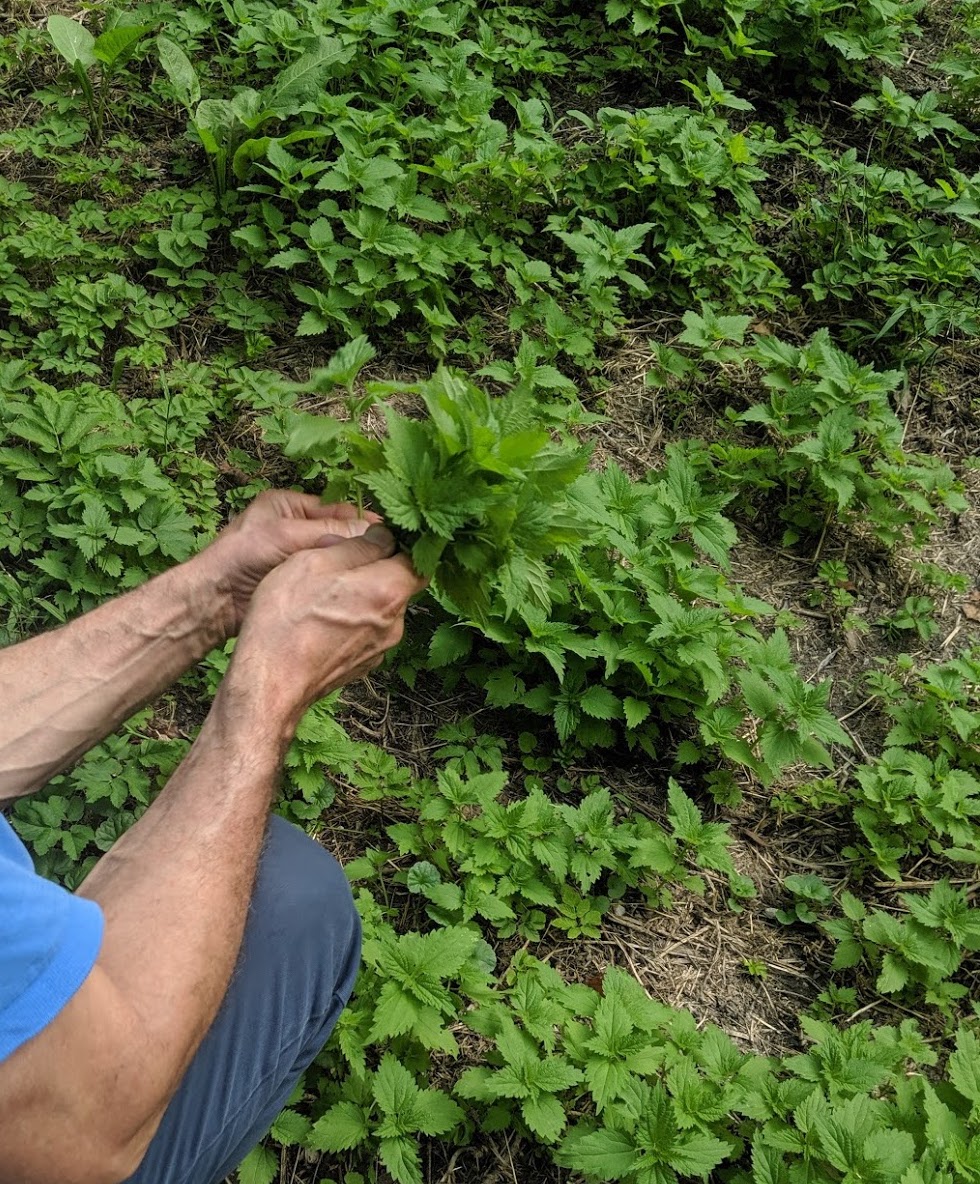
A Trickster’s Plant
Zsuzsanna Ihar

A wild and paludal plant, my grandmother described stinging nettle (Urtica dioica) as the ‘wheat of the floodplains’. It would grow in thick and defiant clusters around the bends of the Danube river, often too miry for conventional crops like barley, rye, and corn.
Whenever there was a shortage of grains, and thus a shortage of bread, she would boil the freshly picked leaves into a hearty clump of dulled green. Previously all sharpness and stinging hair, the nettle would turn delicious, starchy, and leavened in the stomach – filling space like a generous slice, cut out of necessity.
Historically, the nettle has been a steadfast companion to those who hungered during austerity, war and famine. Impoverished rural families in Hungary would make stew out of the leaves, whilst the by-product of iron-rich water would be drunk by the frailest member of each household. It was similarly a source of nourishment and strength for dissenters and fugitives during the Soviet era, who hid in forests and chewed on raw nettle till it was safe to cross the border.
It should be noted that nettle has fed empire as much as it has fed people. Heralded as a lucrative substitute for cotton during the World Wars, nettle was central to powering the Habsburg, and later, Axis forces in Eastern Europe. It was collected by the poor, processed by forced labourers, and woven into military uniforms – reminding us that no plant is innocent in its affiliations.
An accomplice as much as a dissenter. Sometimes a weed, other times a crop. Famine food and war commodity. With a belly full of nettle, one must always remember its sting.

Zsuzsanna Ihar is a postgraduate student whose research examines the emergence of ‘post-extractive’ ecosystems. She is particularly interested in the uptake of remediation and renaturalisation technologies in regions historically associated with crude oil.